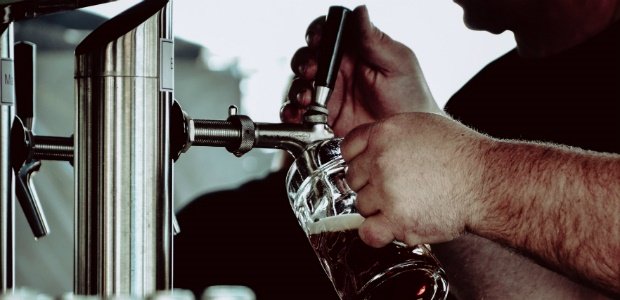(image: Julian Hochgesang for Upsplash)
ALSO READ: What makes beer taste like beer?
For thousands of years, humans have been wrangling microscopic fungi called yeast to do our bidding. We use it to make booze, bread, chocolate or anything that requires fermentation. The crazy thing is that up until the 1800s, we had no idea what it was. We just knew that there was this magic that happened when the conditions were just right. That’s over 8000 years of harnessing an invisible force through trial and error which is pretty damn incredible.
It’s difficult to say when exactly the first alcoholic beverages appeared, but most people agree that it was around 10 000 years ago when we started farming. Yeast is all around us and when bowls of rice or barley porridge were left out for days, wild yeast would get in and ferment the natural sugars in the grains. Some brave soul at one point must have decided to slurp down the porridge and experienced a pleasant buzz from the sour brew. This type of wild fermentation is brewing in its simplest form. These days fermentation is closed and controlled but open fermentation with wild yeast is still practiced around the world.
ALSO READ: 6 Fermented food terms you should know
What makes yeast so special is its ability to take raw ingredients and Frankenstein them into a bubbling mass of life. If you’ve ever home-brewed a beer then you’ll know the joy of screaming, “it’s alive!”, as the yeast takes hold and begins to ferment the brew. The once lifeless liquid bubbles and moves as the yeast munches its way through the fermentable sugars. The by-products of this process are bubbles, booze and flavour. Once the yeast has finished its job, it will either float to the top of the tank or sink to the bottom. Most breweries will collect the mass and reuse it to ferment their next brew.
Fermentation is an art form that takes knowledge and skill to know what yeast to use and how it will react in the beer. In order to get the best results, brewmasters must use a yeast that’s up to the job of the beer style, while minimising undesirable flavours. Brewmaster, Garrett Oliver of the famous Brooklyn Brewery likens yeast to dogs in the way that they are all from the same species, but each breed fulfils a different role. You’ve got as much chance of seeing a Chihuahua in the police force as you do a Great Dane in a socialite’s purse.
These days wrangling yeast is much more precise thanks to scientific advances. After Louis Pasteur identified yeast as a living organism, our understanding of how it worked skyrocketed. Today there are over 1500 strains of yeast but not all are good for brewing. Over time, brewers have isolated ideals strains for brewing for the many styles of beer. These strains fall into two categories: ale yeast (Saccharomyces cerevisiae) or lager yeast (Saccharomyces pastorianus). Ale yeasts produce beers that are robust, fruity and complex, while lager yeasts produce beers that are crisp, clean and straightforward.
Learned a lot today? Share this article with one of your beer-loving friends!
Tune in next week for my must-try list of 6 great brews with yeasty characteristics.
Karl Tessendorf is one part of the duo that hosts ‘Beer Country’, South Africa’s first TV show dedicated to beer, braai and the open road.

